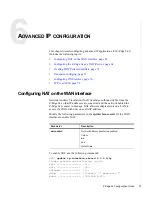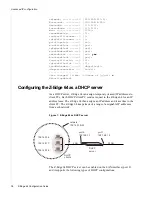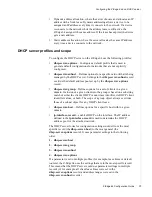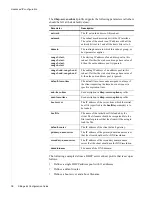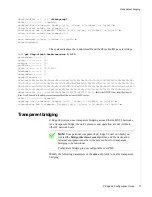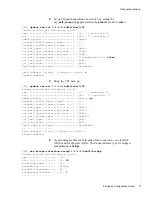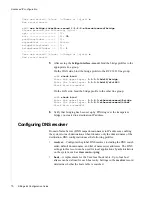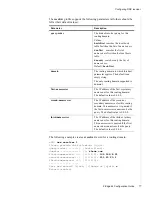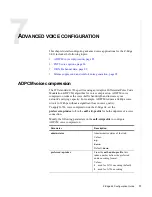
Advanced IP configuration
76
Z-Edge 64 Configuration Guide
Save new record? [s]ave, [c]hange or [q]uit: s
New record saved.
zSH> new bridge-interface-record 1-1-2-0-ethernetcsmacd/bridge
Please provide the following: [q]uit.
vpi: ----------------> {0}:
vci: ----------------> {0}: 35
portGroupIndex: -----> {0}:
stpenabled: ---------> {false}:
bridgefilterindex: --> {0}:
bridgeLowerIfIndex: -> {0}: 1
....................
Save new record? [s]ave, [c]hange or [q]uit: s
New record saved.
5
After saving the bridge-interface-record, bind the bridge profiles to the
appropriate line group.
On the WAN side, bind the bridge profile to the RFC 1483 line group:
zSH> stack bind
Enter the upper layer: 1-1-1-0-hdsl2/bridge
Enter the lower layer: 1-1-1-0-hdsl2/rfc1483
Stack bind successful.
On the LAN side, bind the bridge profile to the other line group:
zSH> stack bind
Enter the upper layer: 1-1-2-0-ethernetcsmacd/bridge
Enter the lower layer: 1-1-2-0-ethernetcsmacd/other
Stack bind successful.
6
Verify that bridging has been set up by PINGing over the transparent
bridge you created to a destination IP address.
Configuring DNS resolver
Domain Name Server (DNS) maps domain names to IP addresses, enabling
the system to reach destinations when it knows only the domain name of the
destination. DNS configuration uses the following profiles:
•
resolver—Configures the global DNS resolver, including the DNS search
order, default domain name, and list of nameserver addresses. The DNS
settings in this record can be used for local applications by administrators
on the system, such as traceroute or ping.
•
hosts—A replacement for the Unix local hosts table. Up to four host
aliases can be defined for each host entry. Settings in the resolver record
determine whether the hosts table is searched.


